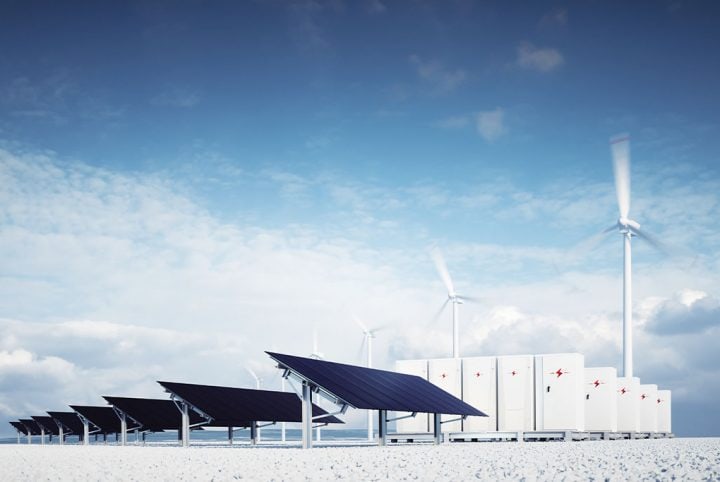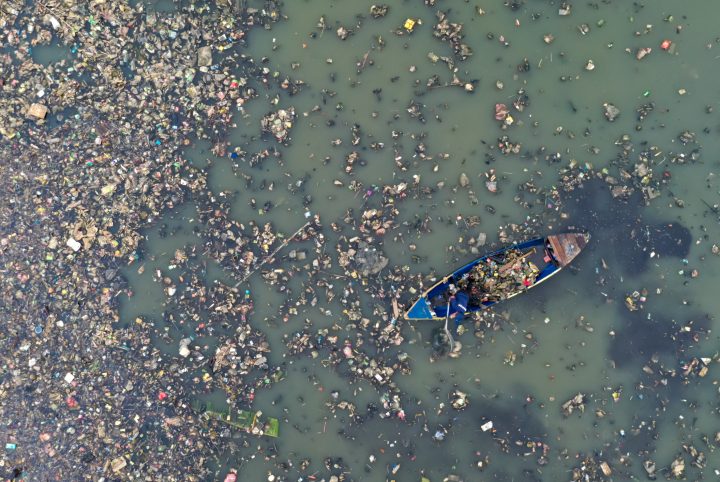
Across the world, urban areas are heading towards a water supply crisis. Is it time to start treating water supply as a balance sheet ‘risk’?
When it comes to the use of increasingly precious natural resources, governments are constantly called upon to make difficult decisions that cast environmental sustainability and cost-effectiveness against increasing demand.
Water in particular requires a delicate balancing act. Around the world, there continues to be a growing demand from thirsty, growing urban centres that must be met with increasingly variable supplies.
Australian governments have recognised the need to offset our reliance on weather-dependent water assets such as reservoirs that have become less reliable due to climate change.
The response has been to reach for expensive solutions such as desalination plants that can ensure supply when the rains don’t come.
The problem is that while such projects can offer water certainty in times of drought (or what economists call ‘supply shocks’), they have both a considerable environmental and economic cost, often borne by taxpayers over decades.
Relying on weather-dependent water sources is often more cost-effective and environmentally sustainable; yet this very clearly runs the risk of cities running low on water.
It is critical that we find ways that balance out environmental sustainability concerns with cost-effectiveness if we are going to manage water scarcity in the long-term.
But have we been thinking about water the wrong way?
Dwindling water supplies
Environmental and natural resource economist Associate Professor Anke Leroux researches the economics of how we manage natural resources such as water to get the best environmental and economic outcomes.
“We are heading towards a global water crisis especially in urban centres with high population growth and dwindling water supplies from reservoirs, aquifers and rivers,” says Associate Professor Leroux.
“If we remain on this trajectory as many as two-thirds of the world population could be facing water shortages by 2025.”
At the heart of her research is identifying water scarcity as a ‘risk’ that needs to be ‘hedged’ in a more innovative way, something she believes is lacking in the current approach.
Previous work in 2016 as part of the Monash-headed CRC for Water Sensitive Cities used financial modelling techniques to construct dynamic ‘optimal portfolio’ models of water assets that governments should invest in, from the very costly – such as desalination plants – to the relatively inexpensive, such harvesting stormwater to supplement our existing reservoirs.
(Uniquely for research in this area, these models jointly optimise the supply portfolio (that is, the mix of water assets) and the consumption from that portfolio over time.)
Essentially, A/Prof Leroux wants governments to treat water risk like it might treat other balance sheet risks – by diversifying.
This might include other more environmentally-friendly alternatives.
“Collecting and utilising storm and rainwater in innovative ways allows us to diversify these risks – reservoir inflows have very different risk profiles than rainwater tanks or small-scale urban water bodies, where water is collected from impermeable surfaces in the city, which means you collect water when it rains even after long periods of no rain,” she explains.
“Rather than relying solely on desalination, which provides a sure supply but carries high investment and environmental costs, we can reduce its scale or avoid building a plant in the first place, by developing other rainwater harvesting schemes to supplement our reservoirs.”
Changing habits
Her latest research with co-authors Vance Martin and Hao Zheng delves into an important piece of the water supply puzzle by looking at ‘habit-driven consumption’ – simply, the way households and other consumers habitually use water.
Nervous about communities running out of water, governments are driven to build large desalination plants to cater to this habit-driven demand, which is ‘stochastic’ (that is, it cannot be predicted precisely).
Habit-driven consumption can go up when there is little rain and people use more water on their dry gardens. But it can also go down if people are seeing and hearing media reports about low dam levels.
In essence, habits can be shifted – for instance, during its ten year drought, Victoria was quite successful in persuading people to actively use less water, a habit that persisted after the drought broke.
A/Prof Leroux and her colleagues set about building a dynamic portfolio model of water consumption and supply that featured risk-hedging opportunities across both weather-dependent water assets (reservoirs and stormwater harvesting) as well as assets for assured supply (desalination).
Their modelling showed that people adopting water-saving behaviour when they know reservoirs are low would allow governments to build in more ‘risk’ to its water supply portfolio – meaning, there can be more weather-dependent assets in the portfolio, which lowers total portfolio costs and is more environmentally friendly.
This would lead to less dependence on desalination.
“This means cheaper water supply portfolios that are also more sustainable, in the sense of being more environmentally friendly,” she says.
“We arrive at this conclusion even when we take into account that policy makers are very averse to the risk of cities experiencing water shortages.”
Results of this modelling point to important areas of future work, necessary to better inform water-supply investments.
Climate change challenges the assumption of constant risk over time: for example, droughts and floods are projected to become more frequent, which means that water assets are becoming riskier.
“We are currently working on incorporating time-varying risk into our framework to understand how the water sector can optimally adapt to climate change,” she says.


